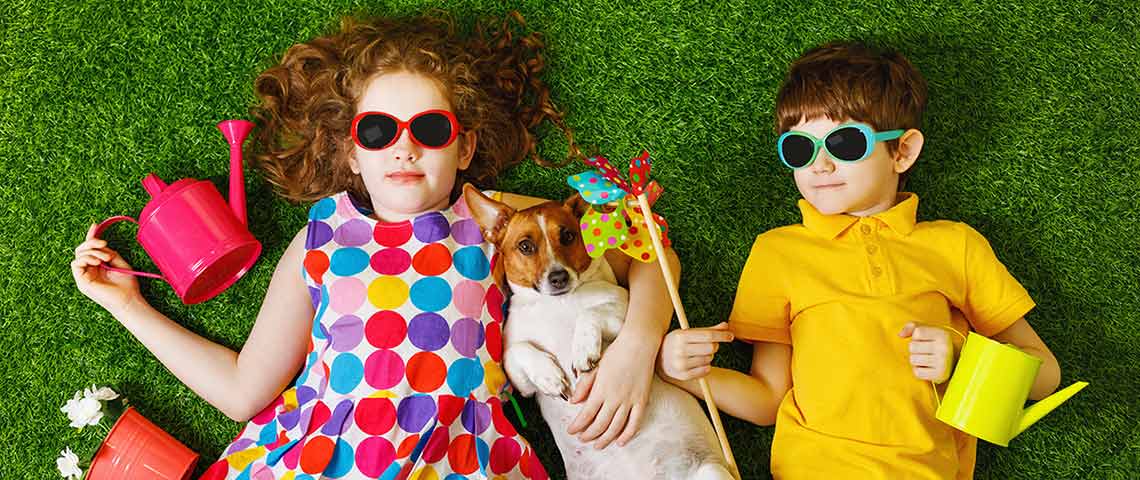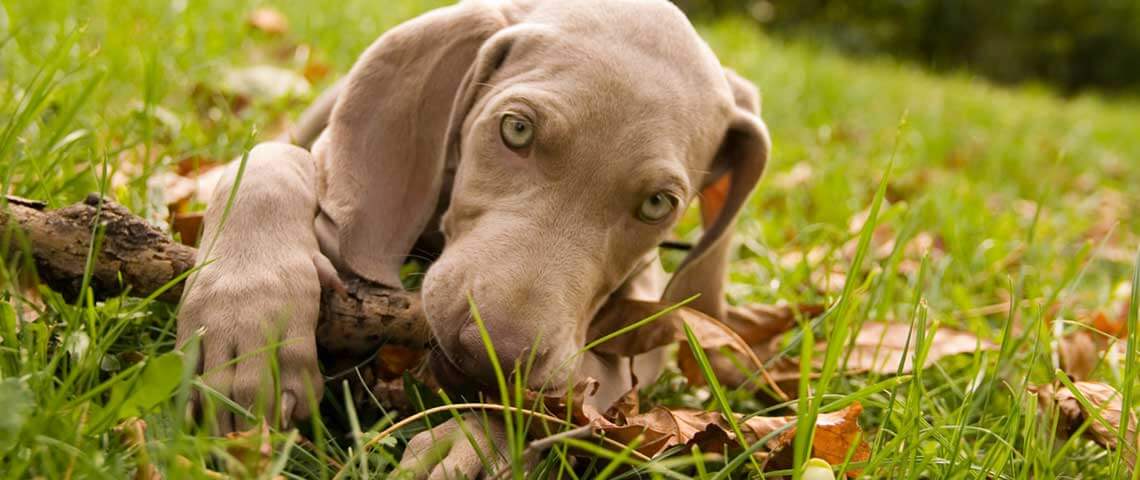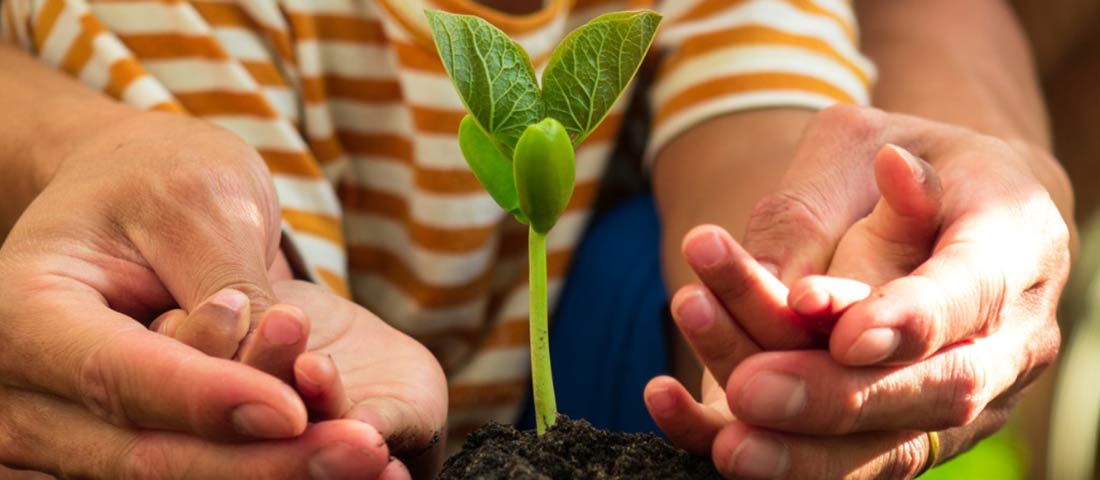DIY Dog Yards and Gardens
When you have your own yard, it's not surprising your furry family members think they've scored their own park. When you and your dog both love your yard, outdoor spaces need to work for everyone involved. Sharing your slice of the Great Outdoors with your trusted companion is part of what makes yards so fun. With a little thought and some planning, you can DIY your way to a dog-friendly yard and garden your fur baby will love.
- Create Special Spaces for Your Dog
- Select Plants with Dogs in Mind
- Plan Garden Spaces for You and Them

Natural instincts to play, patrol and protect come in all sizes.
Create Special Spaces for Your Dog
Let's face it. There's no question who comes first in your family — and your dog knows it's them. But peaceful coexistence in your outdoor spaces generally involves some boundaries. Starting your DIY yard and garden plans with special spaces for your dog helps everything else fall in place. And it helps your dog understand what's okay and what isn't from the start.
- Open Play Spaces – Your dog wants and needs a space where they can run and roll without worrying about bumping into plants, fences or walls. Even if your yard is small, reserve an open space for free-form dog and people playtime.
- Permanent Garden Paths – When your dog hits the yard, do they usually take a set route to check out your neighbor or get to their favorite potty spot? When you recognize a regular path, don't fight it. Beautify it instead. Smooth flagstone or water-wise permeable pavers turn worn, grassless trails into beautiful paths — and cut down on lawn repairs.
- Private Spots for Dogs – Make sure your plans include a sheltered spot for your dog's downtime. One where they can watch over you and your family, cool off after playing catch, or just hang out and rest undisturbed. Think of it like glamping, doggie style. Create an outdoor place they can call their own.
- Fences and Screens – Fences can heighten your dog's natural instincts to patrol and protect. Plants can screen or hide fences and keep views pristine. But trying to keep your dog from walking that fence line can be a battle you're doomed to lose. When you plant, leave room along your fence so you and your pooch both win.

Drought-tolerant zinnias are a perfect fit for dog gardens and butterflies.
Select Plants with Dogs in Mind
When dogs are part of the family, plant selection puts their needs above everyone else. While your dog may be brilliant — fully able to count to 40 and fetch scores of toys by name — plants you told them to avoid may be too tempting. You can help keep your dog safe and happy by choosing plants with them in mind.
- Plant Toxicity – Many popular garden plants and indoor houseplants are toxic to dogs when ingested. The American Society for the Prevention of Cruelty to Animals (ASPCA) publishes a long list of dog-toxic plants and non-toxic plants to choose from instead. Azaleas and rhododendrons are gorgeous shrubs, but relegate them to front yard gardens or areas your dog can't reach. Plenty of your faves, including basil and other garden herbs, get the stamp of approval. Plus zinnias are perfect butterfly landing pads.
- Thorns and Spines – Some plants just weren't meant for dog yards. Think about thorns, cactus spines and spiky needle-like leaves that can easily end up in lips, ears, fur or paws. Look for plants with smooth bark, softer foliage and no thorns or spines in sight. Plant roses and other thorny beauties outside your pup's special zones.
- Tolerance for Salt and Drought – Urine from both male and female dogs acts a lot like road de-icing salts or mismanaged lawn fertilizers that turn plant tips brown or worse. Plants that withstand salt sprays or headline water-conscious, drought-tolerant gardens make great choices for dog-friendly yards. (Larger, more established plants hold up better to urine — and wagging tails.)
- Traffic-Tolerant Lawns – Heavy paw and foot traffic take a toll on turf. For traditional lawns, self-repairing Kentucky bluegrass and drought-tolerant tall fescues are good dog options. Salt- and drought-tolerant Bermudagrass is a great choice farther south. Our durable, self-fertilizing Pennington Smart Seed Clover + Grass Mix is perfect as a sustainable lawn alternative, as long as your pup doesn't think catching clover-eating bees sounds like fun.

Get-togethers are best when furry friends join in the fun.
Plan Garden Spaces for You and Them
Now that your DIY dog yard is under control, it's time to focus on you. Beautiful, productive gardens and dog-friendly landscaping can go hand in hand. Once your dog knows their special spaces, you can lay out your garden plans — but always keep your dog in mind as you grow.
Whether your garden dreams revolve around mini wildflower meadows or yard-to-table vegetable and fruit gardens homegrown from organic seeds, a small fence can go a long way in reminding your dog to stay out until they're welcomed in. If you mulch, avoid using cocoa bean hulls. Like chocolate, cocoa hulls are toxic to dogs. And the chocolatey smell and taste can be too hard to resist.
When you nurture your soil with regenerative, earth-friendly products, like our Pennington Rejuvenate Natural & Organic Garden Soil Mix and Pennington Rejuvenate Plant Foods, always take time to mix them into your soil and water them in. Pets can be attracted to the blend of natural and organic ingredients, so do you and your dog a favor. Reduce their temptation to dig in.
If your dog joins the party when friends and family stop by — and we sincerely hope they do — remember them in planning spaces to entertain people outdoors. Make it simple for your dog to stay close to you or get away to their peaceful spot if the fun becomes too much.
At Pennington, we think the best yards and gardens work with nature, not against it. That goes for DIY dog yards and gardens, too. We've been helping people turn yard and garden dreams into reality since 1945 — and now we're here for you. Have a question or comment? We'd love to hear it. Let us help nurture your roots.
Always read product labels and follow instructions carefully.




